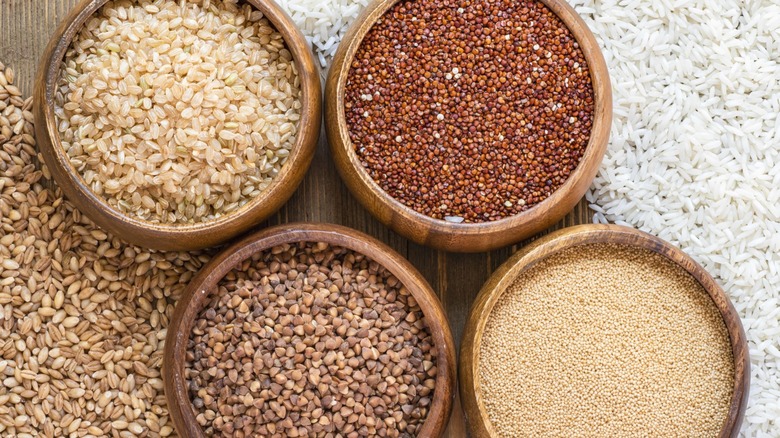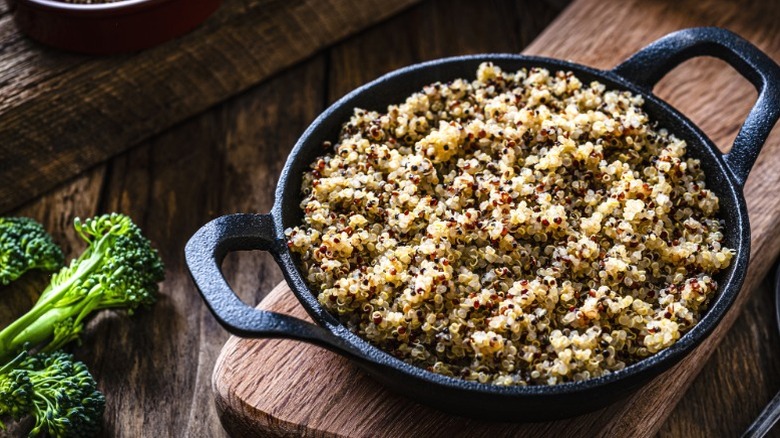What Makes Ancient Grains Different From Their Modern Counterparts
You may have heard at some point in the past — perhaps from a coworker, perhaps from a newly health-conscious uncle at your family reunion — about the virtues of ancient grains. If you've never heard the term before, it may sound lofty, even somewhat fantastical. It brings to mind something a foodie version of Indiana Jones might pursue in order to keep the power of a sensible breakfast out of the wrong hands. The truth is more quotidian, but no less interesting: ancient grains just refer to certain grains which are mostly the same now as they were a centuries ago.
The wheat used to make the bread you buy at the supermarket is not the same wheat that farmers grew even a hundred years ago. Although modern wheat does descend from ancient wheat, it has been selectively bred and, in some cases, genetically modified. The same is true of corn, which used to look much different, and rice too. Mind you, these changes aren't necessarily for any nefarious reason — in fact, selectively breeding hardier varieties of crops like wheat and rice has saved billions of lives — but they may impact their nutritional quality. Ancient grains are often much richer in nutrients like fiber and protein compared to their modern counterparts.
Quinoa, sorghum, and other ancient grains
So where can you get your hands on these mystical, wondrous ancient grains? Well, you probably don't have to go very far. If you go to the dry goods aisle of your local supermarket, you'll probably find the most famous ancient grain waiting for you, packaged in bags from Bob's Red Mill: quinoa. Once regarded as sacred by the Inca, today quinoa is beloved by vegans, as well as by anybody who wants to enjoy a hearty breakfast bowl. Another commonly used ancient grain is sorghum, which is cultivated for both its nutritional quality as well as for its use as a renewable fuel source. In fact, sorghum is the fifth most produced cereal in the world, behind heavy hitters like rice, wheat, maize, and barley.
If you're after something closer to wheat, you can make use of spelt, which is a nutritionally dense cousin to wheat, or einkorn, a lower-yield but higher nutrition ancestor of the wheat we know and love today. Or you can take a look at our list of 14 ancient grains to keep in your pantry, which also include amaranth, buckwheat, and millet. And by cooking them like pasta, you can easily whip up these grains without any fussy measuring.

